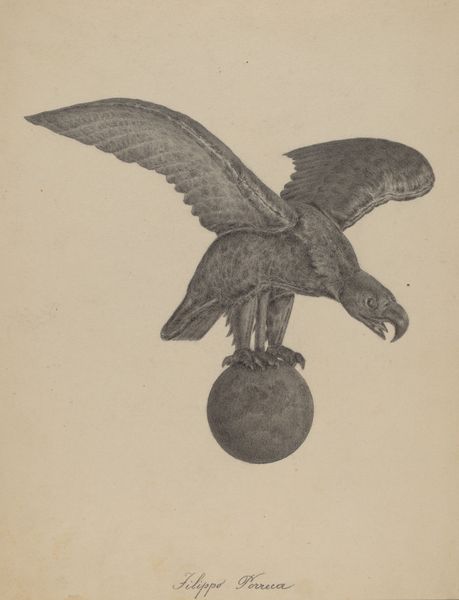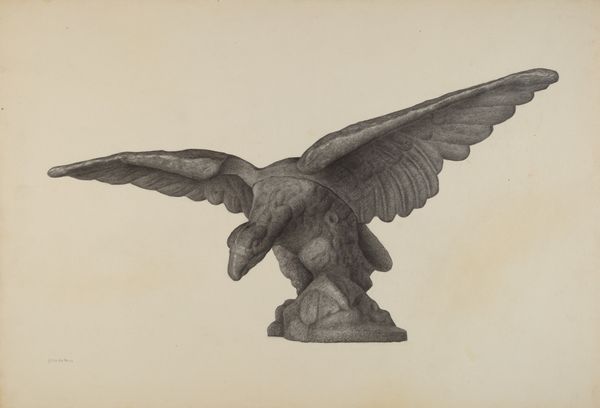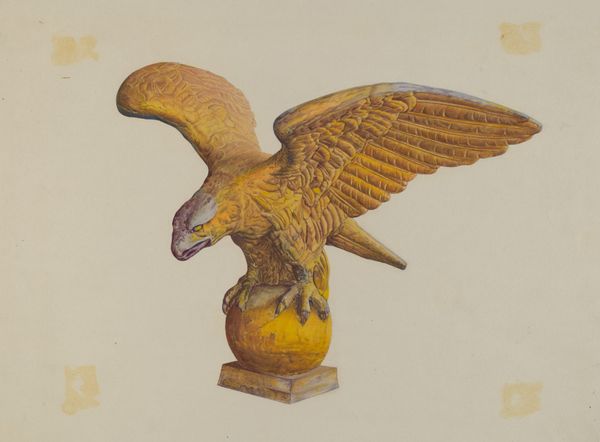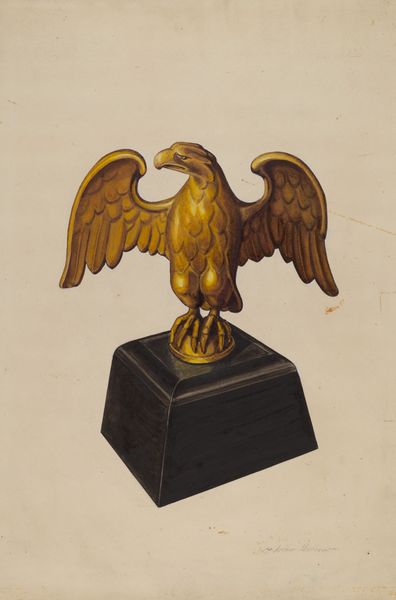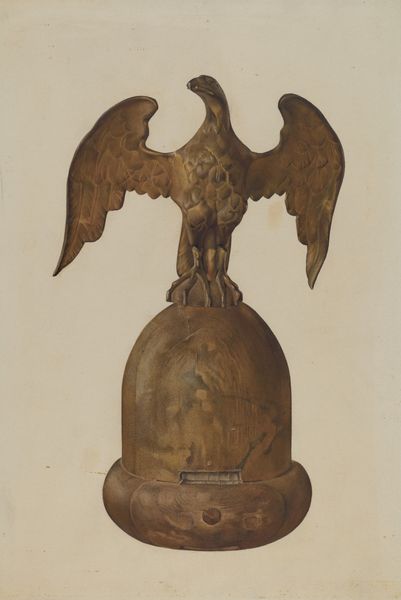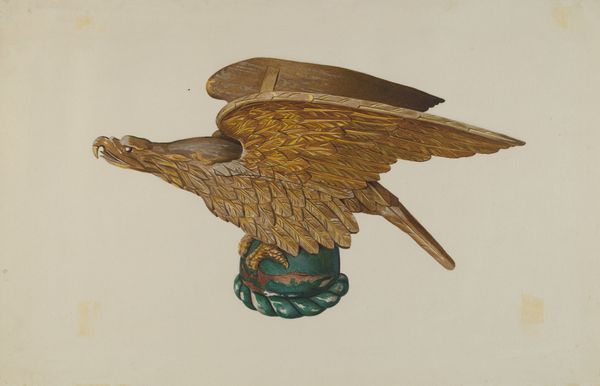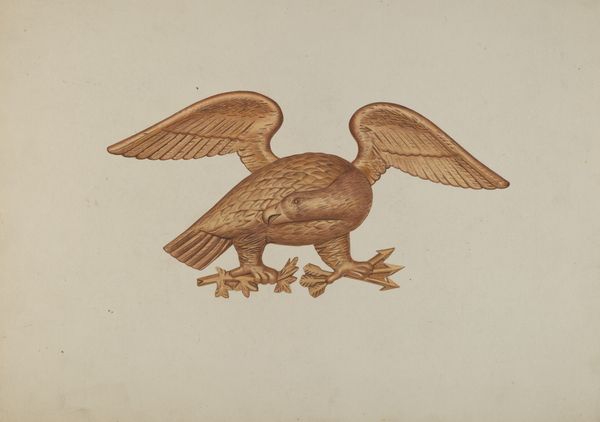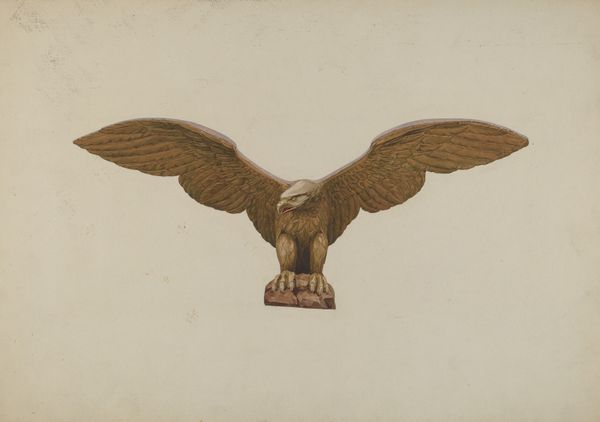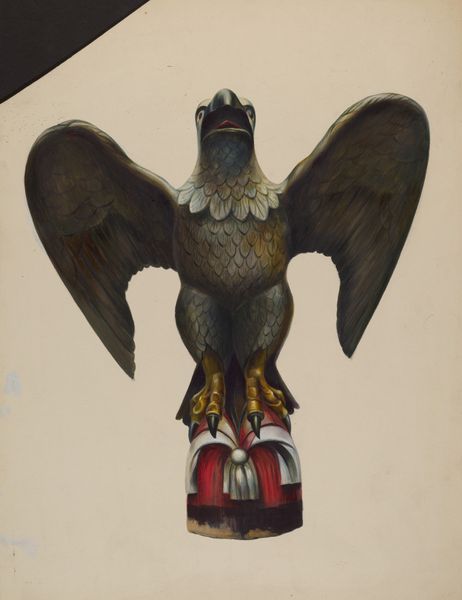
drawing, sculpture, charcoal
#
portrait
#
drawing
#
sculpture
#
charcoal drawing
#
figuration
#
oil painting
#
sculpture
#
charcoal
Dimensions: overall: 28.9 x 36.8 cm (11 3/8 x 14 1/2 in.)
Copyright: National Gallery of Art: CC0 1.0
Editor: This artwork, "Eagle," is a charcoal drawing from between 1935 and 1942. It's quite striking—the eagle perched atop a globe evokes a sense of power and dominance, but it also feels a bit ominous. What do you see in this piece? Curator: The eagle as a symbol, especially when paired with a globe, certainly resonates with power and dominion, doesn't it? Think of the cultural memory associated with the eagle across different empires – Roman, Napoleonic, American. Consider how the artist chose to depict it, the sweeping wings, the talons gripping the world. How does that iconography function here, so close to World War II? Editor: It makes me think about national identity and perhaps the weight of responsibility. Does the drawing technique - the charcoal - play into this at all? Curator: Absolutely. Charcoal, with its capacity for deep blacks and subtle gradations, lends a monumentality to the figure. It's not just an eagle, it's an emblem cast in shadow. What emotions does the color, or lack of color, bring to the surface for you? Does the absence of vibrant hues amplify a feeling of unease or gravity? Editor: Definitely gravity. It feels less like celebration and more like a weighty burden. I never thought about the color contributing to that feeling so much! Curator: Visual symbols are never static; they're constantly re-evaluated and re-contextualized by each viewer's experiences and their own cultural memory. Examining them opens a door into the shared conscious. Editor: That’s fascinating, I am definitely taking a different look at symbols from now on. Thank you. Curator: My pleasure. Remembering is how we ensure our future will improve from our past.
Comments
No comments
Be the first to comment and join the conversation on the ultimate creative platform.
